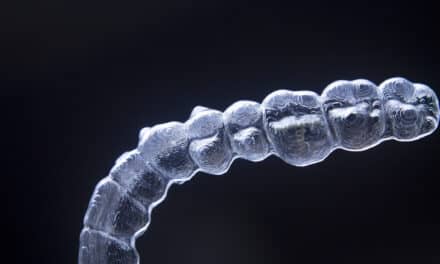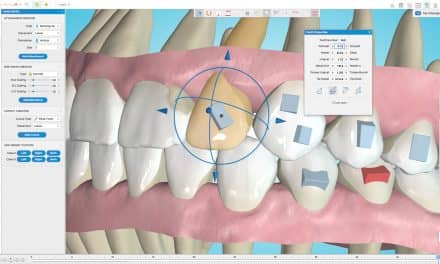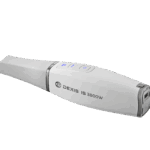By James J. Hilgers, DDS, MS, and Shannon Nissen, DMD, MS

Two kits that aid in simplifying common problems are the A2TM Attachment Aligner Kit for securing clear aligners in place and the Composite-and-Chain (C&CTM) Extrusion Kit for a dependable attachment to impacted teeth.
Aligner Attachment Kit
It is virtually impossible to get effective tooth movements using clear aligners without a method of holding the aligners securely in place. This is the only viable way to achieve a complete purchase on the teeth to be moved, commonly referred to as “tracking.” Orthodontists achieve a secure fit by placing different sizes and shapes of composite buttons on the labial or lingual surface of the teeth. The buttons serve as retentive ledges to hold the clear aligners down and in place. The major purveyors of sequential aligners often provide an auxiliary tray for placing the composite retention buttons on the teeth. This is fine for more complex aligner treatment, and is included in the lab cost of the materials provided.

To use the kit:
1) etch and seal the target tooth;
2) fill the polyvinyl form with composite;
3) place the form against the surface of the conditioned teeth; and
4) light-cure the button in place.
The resulting impression and plaster model of the teeth will accurately reflect the precise smoothness and shape of the polyvinyl molds.

The most common way of attaching gold extrusion chain to an impacted tooth for the purpose of extrusion is to use a bonded, mesh-based eyelet or bracket. Since the mesh base has only one contour, often it can’t be placed flush against a tooth that has minimally exposed surface anatomy. This can result in a weak bond and possible failure, requiring a repeat of the surgical procedure to re-bond the attachment.
More importantly, when the tooth has been extruded, the eyelet or bracket must be removed. The extruded teeth are typically very sensitive, and attempts to remove the metal mesh base by pinching it can be very painful for the patient. At times, the entire metal attachment needs to be ground away. and this can be both time-consuming for the orthodontist and uncomfortable for the patient. Although the metal-mesh base attachment is effective in many cases, at times it can present difficulties for the oral surgeon or, ultimately, for the orthodontist.
The C&C Extrusion Kit makes this procedure simpler for both the oral surgeon and the orthodontist by avoiding the metal-mesh base intermediary altogether. Instead of using a metal/mesh bonding pad to secure the chain, the C&C kit uses a pod of polymerized composite, formed to the exact available anatomy of the tooth, in which the 14K gold chain is integrally embedded.
The kit includes two configurations of clear silicone molds that form oval (small) or rectangular (large) composite pods, depending on the surface area available to the surgeon. The translucent silicone mold allows direct exposure to a curing light and permits complete curing of the composite pod. The malleable walls of the silicone form allow the composite to contour to the exposed anatomy of the target tooth. The composite cures to a smooth, glassine surface so that there are no residual rough edges to compromise tissue healing. The enamel primer included in the kit (Assure Universal Bonding Resin) is hydrophilic, so you can get a secure bond even with slight moisture on the etched enamel surface. Because the chain is completely encapsulated in the polymerized composite, extrusion forces can be applied with less concern for bond failure.
Most importantly, once the tooth has been moved into its proper place in the dental arch, the composite pod and encapsulated chain can simply be smoothed off the tooth surface with a diamond composite removal bur. This avoids the painful crimping or fracturing of the attachment, which can be the source of severe patient discomfort.
These two simple kits are answers to what can be complex problems in our going-all-digital orthodontic world.
James Hilgers, DDS, MS, is in private practice in Mission Viejo, California. He is an associate professor of Orthodontics at Loma Linda University School of Dentistry. He can be reaced at [email protected].
Shannon Nissen, DMD, MS, is a third-generation orthodontist and a 2007 graduate of Loma Linda University Orthodontic Department. She practices in Mission Viejo, California. She can be reached at [email protected].











